The Lineage - Bihar School of Yoga - Bihar Yoga Bharati - Yoga Research Foundation - Applications of Yoga in Society - Satyananda Yoga System Yoga is a broad subject which deals with the management of physical, psychological, emotional and spiritual states, and there are many schools of yoga in the world today. Our attempt has been to understand yoga in the context of our present day situation and environment, and to discover how we can derive the benefits from this ancient practice. Yoga is not specifically Indian. Evidence of yoga in the form of ancient statues and carvings have been found in many different cultures including South America and Europe, but India has been the main preserver of the knowledge. Yoga is not religion, although there is an esoteric aspect which was practised by the ancient yogis and seers who lived in isolation in caves thousands of years ago. However, the great yoga masters and teachers over the last 50 years have brought the practical aspects of yoga into focus, in accordance with the needs of society today. Therefore, it should be clear that the yogic concept should not be confused with any form of religious concepts.
|
|
| The Lineage Our tradition began with Swami Sivananda Saraswati, a highly qualified medical doctor who felt that people were not only sick in body but also in mind and spirit. He renounced his flourishing medical practice in Southeast Asia, to become a sannyasin of the highest monastic tradition and to lead a yogic life. Through the system he established, he inspired many others to follow him on this path, in this tradition, to live their lives according to the will of the divine, in the service of others, with love and compassion. |
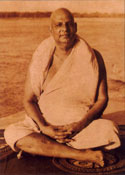 |
|
|
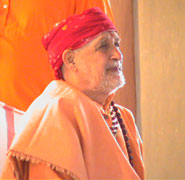 |
One of the jewels in this crown was Paramahamsa Satyananda, who is recognized as one of the first yoga teachers to speak about yoga in scientific terms. Through his efforts research started to discover the effects and benefits of yoga for the management of physical, psychological and spiritual imbalances. |
|
|
| Some of our institutions which are dedicated to the propagation of yoga, to higher advanced learning in yoga, to social development and to research are briefly outlined below. |
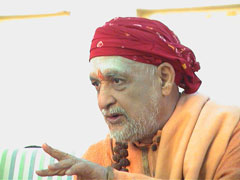 |
|
|
|
 |
Bihar School of Yoga Bihar School of Yoga is the original institute, established by Swami Satyananda in 1963 in Munger, India to propagate yoga. Today it conducts classes, teacher training, health management and yoga therapy courses. Some of the courses are for general health ailments, others are for specific ailments like respiratory disorders, diabetes, gynaecological problems, hypertension, digestive problems, etc. |
|
|
|
| Bihar Yoga Bharati University (BYB) The culmination of Bihar School of Yoga, has been the establishment of Bihar Yoga Bharati which brings yoga into the academic field and has official recognition from the Government Education Department as a Yoga University. At present, courses are conducted in yogic studies: a four-month undergraduate Certificate Course, a one-year undergraduate and post graduate Diploma Course, and two-year postgraduate Masters Courses in Yoga Philosophy, Yoga Psychology and Applied Yogic Science. Qualified BYB students are now being employed by different industries, corporations and hospitals and other institutions to teach yoga. In Australia and Europe, Satyananda Academy's of Yoga have been established where higher learning can take place. |
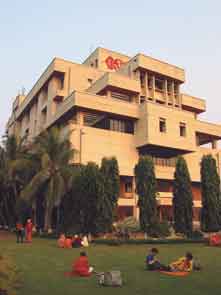 |
|
|
|
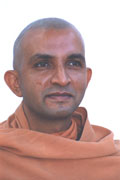 |
Yoga Research Foundation The Yoga Research Foundation, based in Munger, conducts scientific and medical research to define the role of yoga in the management of respiratory disorders, cardiac problems, digestive disorders, pregnancy, arthritis, spondylosis, blood pressure, gynaecological problems, diabetes, cancer, HIV+, drug addiction, and so on. Through this research foundation the practices of yoga are brought into the light of scientific understanding so they can become applicable for the management of illness in society. Agreements have been made with the Apollo Hospitals to conduct research to discover the effects and benefits of yoga for cancer patients. |
|
|
|
|
Applications of Yoga in Society Today the scope of the applications of yoga in society is considerable and varied both in India and world-wide. The principles of yoga therapy have been accepted and are being taught as a subject in nine medical colleges in the state of Bihar. The Health Department has identified thirty-six physiological disorders which can be easily treated and managed through the practices of yoga Yoga in education: 30 years ago in Paris, RYE (Research in Yoga and Education) was started, which now operates under Government authorisation in 9 countries, training school teachers to use simple yoga techniques in the classrooms which research has shown improves intelligence, memory, concentration, personality development, self esteem and social awareness. In January 2000 specialized training programs began, following the request of the Sports Authority of India, to train national and international athletes to improve their performances. First the coaches are trained and when they accept the usefulness of yoga, the athletes receive the training. Yoga is being taught to thousands of inmates in prisons in India, Australia and Europe and this work has been very successful. Over three hundred life prisoners have been trained as yoga teachers and there has been a dramatic improvement in their mentality. The prisoners report that they experience a psychological improvement in their lives, with a reduction in guilt, anger and frustration and an increase in joy and peace. A long-term project 'Yoga for the Railways' will be inaugurated shortly, which will involve special training in yoga to the drivers, engineers, officers and workers of Indian Railways. We are also running yoga training programs for the Military Police and the Armed Forces who have very stressful jobs. Drug addiction has been identified by Bihar Yoga Bharati as a huge problem world-wide, that needs addressing urgently. Satyananda Yoga is being used in many counties to assist those in drug and alcohol rehabilitation centres as part of the therapeutic process. The techniques are most useful in releasing the stress that leads to addiction, detoxifying the body and mind, and raising self awareness. Specific classes are taught to pregnant women, the elderly and to those with physical or mental disabilities. The Satyananda Yoga system The question often comes up, "How is the teaching and training, imparted by Bihar School of Yoga different to other yoga institutes, to other traditions or systems?" We have been working with yoga for the last thirty years and trying to develop a particular idea, or vision, in relation to human nature and human personality. The World Health Organization defines health as not only physical but also mental, social, emotional and spiritual. The Satyananda system is an integrated approach to yoga, incorporating all the different yogas to achieve completeness or wholeness. This system is designed to promote:- physical well-being through the practices of hatha yoga. In the physical dimension we are looking for balanced health, vitality, flexibility, strength, relaxation, self-control and grace. Mental stability and well-being are promoted through the practices of mind management in the form of raja yoga - pratyahara(sensory withdrawal), dharana (concentration), dhyana (meditation) and karma yoga (yoga of action). In the mental dimension, we aspire for relaxation, concentration, improvement of memory, attainment of clarity, creativity in expression, mental balance and awareness. In the emotional area, we are looking for equanimity, self-acceptance, inner peace, self-control, transformation, development of the personality, and devotion. Devotion means one-pointed awareness, not in a religious context, but through the channelling of emotions. In the social dimension of yoga, we try to attain the ability to serve, to interact with others with greater clarity and wisdom, awareness of the social environment, understanding and acceptance of responsibility and life itself. In the spiritual dimension, we are looking for compassion, understanding, surrender, intuition, and self-realization. Self-realization, which does not mean realizing the spirit but realizing one's duty for the betterment of oneself, the environment and the universe. The spiritual dimension represents the culmination of an integrated personality, outer and inner: expanded awareness, union, compassion, surrendering to the cosmic will and intuition. Ultimately yoga provides one with wisdom to attain external and internal prosperity in life. Prosperity does not mean financial power; it means the ability to live life happily, joyously, in a contented way. The yogic concept of prosperity is not money, but contentment. Once you have contentment, no matter where you live, or how you live, you are always at peace with yourself. This contentment comes with realization and wisdom. This is a brief and broad outline of the Satyananda Yoga system. Although yoga cannot provide all the answers to the suffering of humanity, it can definitely contribute to the betterment of human health through the practices and principles contained in it. Top Extracted from lecture given by the Chancellor of Bihar Yoga Bharati University, Swami Niranjanananda Saraswati at 'Applications of Yoga in the New Millennium' Seminar, Buckland Hall, Wales, June 2000 with some editing by SYC - Birmingham and photos added by Padmasambhava |
|
Satyananda Yoga Tradition
By:Swami Niranjanananda Saraswati on:Fri 25 of May, 2007 06:50 BST (21650 Reads)
By:Swami Niranjanananda Saraswati on:Fri 25 of May, 2007 06:50 BST (21650 Reads)
|
|
Extracted from lecture given by the Chancellor of Bihar Yoga Bharati University, Swami Niranjanananda Saraswati at 'Applications of Yoga in the New Millennium' Seminar, Buckland Hall, Wales, June 2000 with some editing by SYC - Birmingham and photos added by Padmasambhava |